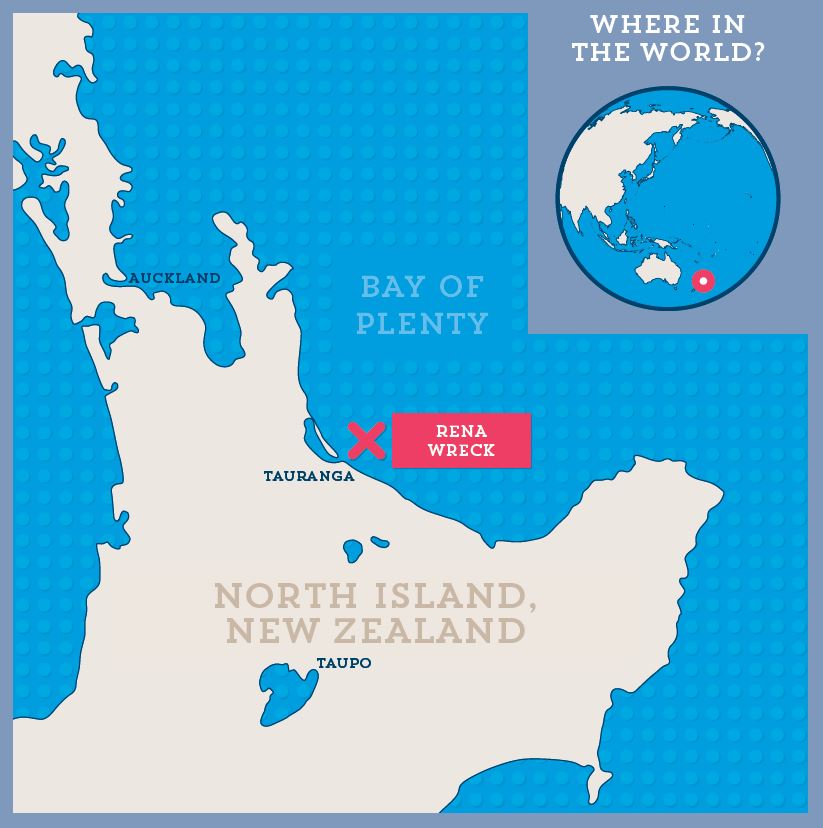RENA – WRECKED ON 5 OCTOBER 2011
Ships have come a long way in the 3,300 years since the Uluburun ship set sail, and they still carry most of our international cargo.
At 236 m long, MV Rena was nearly 16 times the length of Uluburun, and could carry a lot more. But bigger ships mean bigger problems when disaster strikes.

Just after midnight on 5 October 2011, Rena ran straight into Otāiti, a reef 27 km off the coast of New Zealand, at full speed (over 30 km/h). There it stuck, tilted to one side, spilling pollutants into the sea. So began New Zealand’s worst maritime environmental disaster.
Rena was carrying more than 1,300 shipping containers, eight of them full of hazardous materials, such as pesticides and strong acids, as well as 1,700 tonnes of heavy fuel oil (HFO) and 200 tonnes of marine diesel.
After the grounding, up to 350 tonnes of oil escaped, plus a lot of cargo from the containers, including plastic beads, latex gloves, packets of milk powder, timber and furniture. Drifting and submerged containers became shipping hazards.
By October 9, the oil slick spread 5 km from the wreck. The next day it began washing ashore, devastating wildlife.
Eventually Rena broke in half and the back part slid off the reef and sank.
New Zealand’s Transport Accident Commission report concluded the Rena grounding was entirely the fault of the crew, who had altered course to try and save time.
Modern technology may mean fewer ships are lost without trace, and more crews are rescued, but shipwrecks today can have a huge impact on our environment.
The Rena wreck site isn’t an archaeology project (yet) but it still has lots to teach us.
